Related Research Articles
Zodiacal light is a faint glow of diffuse light in the sky scattered by interplanetary dust, particularly a zodiacal cloud, along the ecliptic, and therefore the zodiac. It is mostly only visible in very dark conditions across the night sky along the whole ecliptic as the zodiacal band, backscattered slightly brighter from an oval area of the band directly opposite to the light source as the gegenschein and brightest as a triangle-shaped area at the horizon around the light source as false dawn, mostly just before or after the Sun rises or sets.

Astrochemistry is the study of the abundance and reactions of molecules in the universe, and their interaction with radiation. The discipline is an overlap of astronomy and chemistry. The word "astrochemistry" may be applied to both the Solar System and the interstellar medium. The study of the abundance of elements and isotope ratios in Solar System objects, such as meteorites, is also called cosmochemistry, while the study of interstellar atoms and molecules and their interaction with radiation is sometimes called molecular astrophysics. The formation, atomic and chemical composition, evolution and fate of molecular gas clouds is of special interest, because it is from these clouds that solar systems form.

Stardust was a 385-kilogram robotic space probe launched by NASA on 7 February 1999. Its primary mission was to collect dust samples from the coma of comet Wild 2, as well as samples of cosmic dust, and return them to Earth for analysis. It was the first sample return mission of its kind. En route to Comet Wild 2, it also flew by and studied the asteroid 5535 Annefrank. The primary mission was successfully completed on 15 January 2006 when the sample return capsule returned to Earth.

Comet 81P/Wild, also known as Wild 2, is a comet with a period of 6.4 years named after Swiss astronomer Paul Wild, who discovered it on January 6, 1978, using a 40-cm Schmidt telescope at Zimmerwald, Switzerland.
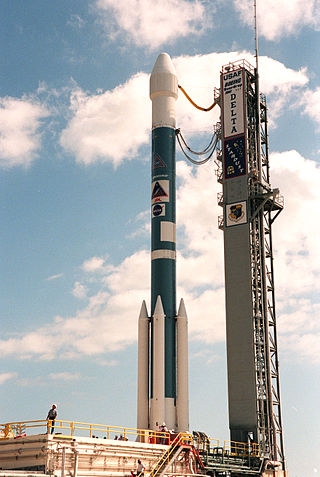
Presolar grains are interstellar solid matter in the form of tiny solid grains that originated at a time before the Sun was formed. Presolar grains formed within outflowing and cooling gases from earlier presolar stars. The study of presolar grains is typically considered part of the field of cosmochemistry and meteoritics.

Advanced Composition Explorer is a NASA Explorer program satellite and space exploration mission to study matter comprising energetic particles from the solar wind, the interplanetary medium, and other sources.

A micrometeorite is a micrometeoroid that has survived entry through the Earth's atmosphere. Usually found on Earth's surface, micrometeorites differ from meteorites in that they are smaller in size, more abundant, and different in composition. The IAU officially defines meteoroids as 30 micrometers to 1 meter; micrometeorites are the small end of the range (~submillimeter). They are a subset of cosmic dust, which also includes the smaller interplanetary dust particles (IDPs).
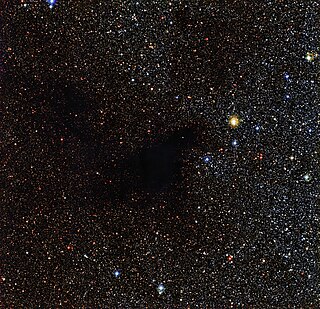
In astronomy, extinction is the absorption and scattering of electromagnetic radiation by dust and gas between an emitting astronomical object and the observer. Interstellar extinction was first documented as such in 1930 by Robert Julius Trumpler. However, its effects had been noted in 1847 by Friedrich Georg Wilhelm von Struve, and its effect on the colors of stars had been observed by a number of individuals who did not connect it with the general presence of galactic dust. For stars lying near the plane of the Milky Way which are within a few thousand parsecs of the Earth, extinction in the visual band of frequencies is roughly 1.8 magnitudes per kiloparsec.

The interplanetary medium (IPM) or interplanetary space consists of the mass and energy which fills the Solar System, and through which all the larger Solar System bodies, such as planets, dwarf planets, asteroids, and comets, move. The IPM stops at the heliopause, outside of which the interstellar medium begins. Before 1950, interplanetary space was widely considered to either be an empty vacuum, or consisting of "aether".
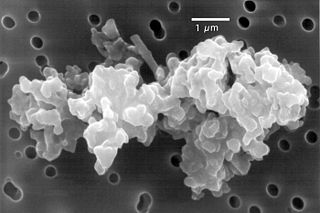
Cosmic dust – also called extraterrestrial dust, space dust, or star dust – is dust that occurs in outer space or has fallen onto Earth. Most cosmic dust particles measure between a few molecules and 0.1 mm (100 μm), such as micrometeoroids and meteoroids. Cosmic dust can be further distinguished by its astronomical location: intergalactic dust, interstellar dust, interplanetary dust, and circumplanetary dust. There are several methods to obtain space dust measurement.
The interplanetary dust cloud, or zodiacal cloud, consists of cosmic dust that pervades the space between planets within planetary systems, such as the Solar System. This system of particles has been studied for many years in order to understand its nature, origin, and relationship to larger bodies. There are several methods to obtain space dust measurement.
Comet dust refers to cosmic dust that originates from a comet. Comet dust can provide clues to comets' origin. When the Earth passes through a comet dust trail, it can produce a meteor shower.

Extraterrestrial material refers to natural objects now on Earth that originated in outer space. Such materials include cosmic dust and meteorites, as well as samples brought to Earth by sample return missions from the Moon, asteroids and comets, as well as solar wind particles.
Eberhard Grün is a German planetary scientist who specialized in cosmic dust research. He is an active emeritus at the Max Planck Institute for Nuclear Physics (MPIK), Heidelberg (Germany), research associate at the Laboratory for Atmospheric and Space Physics (LASP) in Boulder (Colorado), and was a professor at the University of Heidelberg until his retirement in 2007. Eberhard Grün has had a leading role in international cosmic dust science for over 40 years.
The Micro-Imaging Dust Analysis System (MIDAS) is one of several instruments on the European Space Agency's Rosetta mission which studied in-situ the environment around the active comet 67P/Churyumov–Gerasimenko as it flew into the inner Solar System. MIDAS is an atomic force microscope (AFM) designed to collect dust particles emitted from the comet, and then scan them with a very sharp needle-like tip to determine their 3D structure, size and texture with very high resolution.

The Galileo and Ulysses Dust Detectors are almost identical dust instruments on the Galileo and Ulysses missions. The instruments are large-area highly reliable impact ionization detectors of sub-micron and micron sized dust particles. With these instruments the interplanetary dust cloud was characterized between Venus’ and Jupiter's orbits and over the solar poles. A stream of interstellar dust passing through the planetary system was discovered. Close to and inside the Jupiter system streams nanometer sized dust particles that were emitted from volcanoes on Jupiter's moon Io and ejecta clouds around the Galilean moons were discovered and characterized.
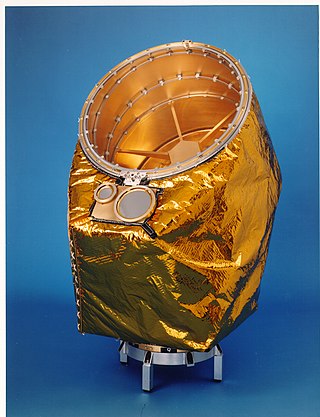
The Cosmic Dust Analyzer (CDA) on the Cassini mission is a large-area multi-sensor dust instrument that includes a chemical dust analyzer, a highly reliable impact ionization detector, and two high rate polarized polyvinylidene fluoride (PVDF) detectors. During 6 years en route to Saturn the CDA analysed the interplanetary dust cloud, the stream of interstellar dust, and Jupiter dust streams. During 13 years in orbit around Saturn the CDA studied the E ring, dust in the plumes of Enceladus, and dust in Saturn's environment.

Space dust measurement refers to the study of small particles of extraterrestrial material, known as micrometeoroids or interplanetary dust particles (IDPs), that are present in the Solar System. These particles are typically of micrometer to sub-millimeter size and are composed of a variety of materials including silicates, metals, and carbon compounds. The study of space dust is important as it provides insight into the composition and evolution of the Solar System, as well as the potential hazards posed by these particles to spacecraft and other space-borne assets. The measurement of space dust requires the use of advanced scientific techniques such as secondary ion mass spectrometry (SIMS), optical and atomic force microscopy (AFM), and laser-induced breakdown spectroscopy (LIBS) to accurately characterize the physical and chemical properties of these particles.

The Helios 1 and 2 spacecraft each carried two dust instruments to characterize the Zodiacal dust cloud inside the Earth’s orbit down to spacecraft positions 0.3 AU from the sun. The Zodiacal light instrument measured the brightness of light scattered by interplanetary dust along the line of sight. The in situ Micrometeoroid analyzer recorded impacts of meteoroids onto the sensitive detector surface and characterized their composition. The instruments delivered radial profiles of their measured data. Comet or meteoroid streams, and even interstellar dust were identified in the data.
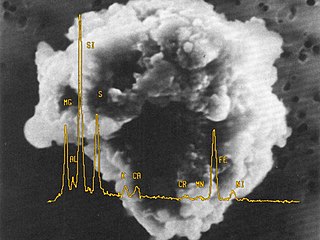
Dust astronomy is a subfield of astronomy that uses the information contained in individual cosmic dust particles ranging from their dynamical state to its isotopic, elemental, molecular, and mineralogical composition in order to obtain information on the astronomical objects occurring in outer space. Dust astronomy overlaps with the fields of Planetary science, Cosmochemistry, and Astrobiology.
References
- Bradley, John; Ireland, Trevor I (1996). "The Search for Interstellar Components in Interplanetary Dust Particles". Physics, Chemistry, and Dynamics of Interplanetary Dust, ASP Conference Series, Vol 104. pp. 275–282.
Footnotes
- ↑ Bradley and Ireland, 1996